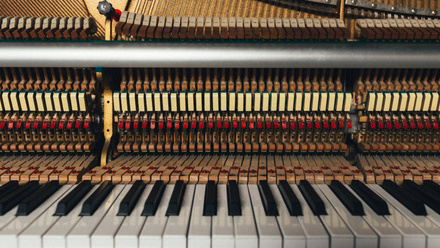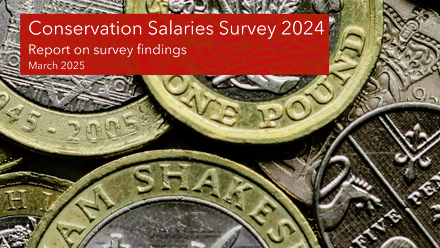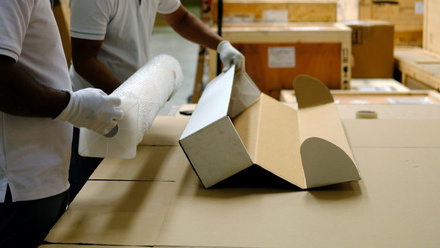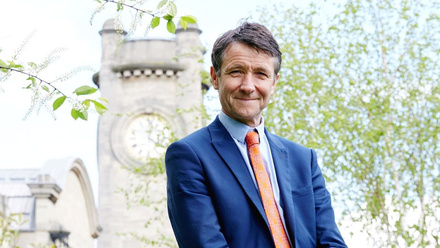The report Vibratory Impacts of Music and Transport on Museum Collections has been released by the international research group who developed and issued the research questionnaire in 2020 just before the pandemic.
The questionnaire was circulated by several museum-related organizations, including AIC, ARCS, IIC, Icon, and ICOM-CC working groups.
Over 150 respondents from 138 institutions around the world participated by providing detailed information about their current practices and experiences with vibrations of their collections during musical events and transport of objects. Some highlights of the results are below.
Vibrations During Musical Events
Nearly all of the 155 respondents indicated that they allow music to be played adjacent to their collections.
Two-thirds of those who allow music reported having seen effects on the collections, which are categorized and analyzed in the report.
Roughly an equal share reported having and not having any operational restrictions or noise/vibration limits, with the vast majority of those using a general volume limit or decibel limit. However, the likelihood of observing effects on the collections did not appear to be correlated with whether an institution has a decibel limit or what the magnitude of that decibel limit is.
The report features “spotlights” on five prominent museums who gave permission to share their detailed responses about their practices and experiences with musical events.
Vibrations During Transport
Just over half of the respondents reported having observed damage attributed to shock or vibration during transport, but such occurrences seem to be relatively rare.
The damage reported was usually minor, but in a few cases more severe damage has been detected. The damage descriptions that respondents shared are listed and categorized in the report.
About one-third of respondents reported using data loggers in some of their shipments. The over 30 different makes and models of devices being used are listed in the report.
Only approximately 15% of those who responded have quantitative limits on shock and vibration during transport, and those limits varied. The specific responses regarding data collected and damaged observed from transport are included for numerous museums who gave their permission.
Upcoming webinars
“Findings of Research Questionnaire on Vibratory Impacts of Music and Transport on Museum Collections”
Dates and times (same program each time):
- April 18, 2023, 9:00 to 10:30 AM CST [equivalent to 7:00 AM PDT, 10:00 AM EDT, 15:00 BST (London) and 16:00 CEST (Amsterdam/Paris)]
- April 25, 2023, 9:00 to 10:30 AM CST [equivalent to 7:00 AM PDT, 10:00 AM EDT, 15:00 BST (London) and 16:00 CEST (Amsterdam/Paris)]
To attend please register here.
Protecting museum collections from vibrations due to building construction and refurbishment is a recognized concern. More recently, museums and cultural heritage organizations around the world have been taking note of the potential impacts that vibrations from music can have on their collections, and new questions are being raised about vibrations during transport.
The findings of a research questionnaire into these topics, Vibratory Impacts of Music and Transport on Museum Collections, were recently released. Over 150 respondents from 138 institutions around the world participated by providing detailed information about their current practices and experiences with vibrations of their collections during musical events and transport of objects.
In these 90 minute webinars organised in partnership with ARCS and AIC, the research group behind the questionnaire will present findings from the report and provide a forum for your questions and discussion. In the first half of each 90-minute session, speakers from the research group will provide a high-level summary of report, along with comments on the results from a conservation perspective and a collections specialist perspective. In the second half of each session, the research group will serve as panellists to answer questions submitted via chat by webinar participants
Participants are encouraged to read the research report in advance of the webinar, and to bring questions and discussion topics, especially those focused on what further research, initiatives, working groups, etc. would best lead to practical guidelines for use in the field.
Speakers and Panellists
- Arne Johnson, Principal Structural Engineer, Wiss, Janney, Elstner Associates, Northbrook, Illinois
- Dr. Catherine Higgitt, Principal Scientist, Scientific Department, The National Gallery, London
- Mark Ryan, Assistant Director for Collections & Exhibitions, Mildred Lane Kemper Art Museum, St. Louis, Missouri
- Dr. W. (Bill) Wei, Senior Conservation Scientist, Cultural Heritage Agency of the Netherlands (RCE)
Panellists
- JP Brown, Regenstein Conservator, The Field Museum, Chicago, Illinois
- Peter Henson, Practice Consultant, and Tomasz Galikowski, Associate Acoustic Engineer, Bickerdike Allen Partners, London
- Dr. Mohamed ElBatanouny, Senior Structural Engineer, Wiss, Janney, Elstner Associates, Northbrook, Illinois







